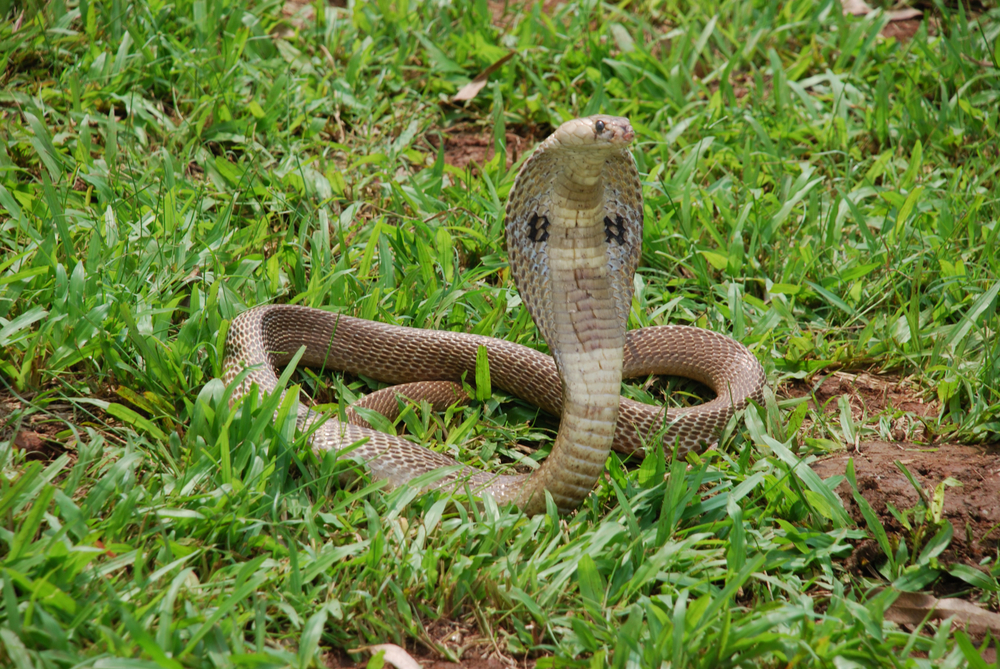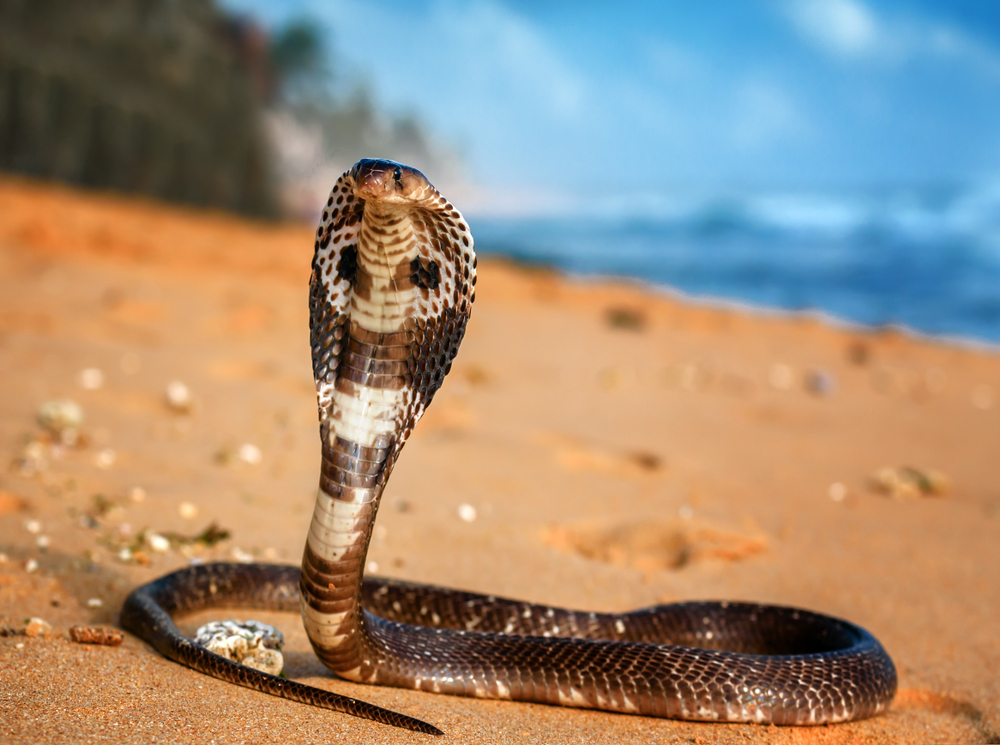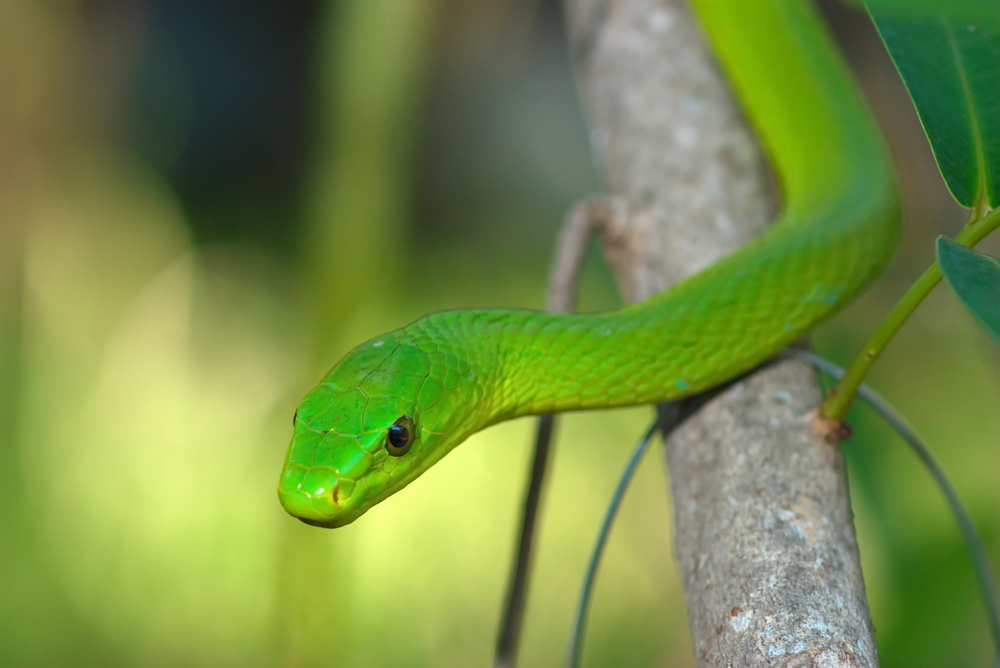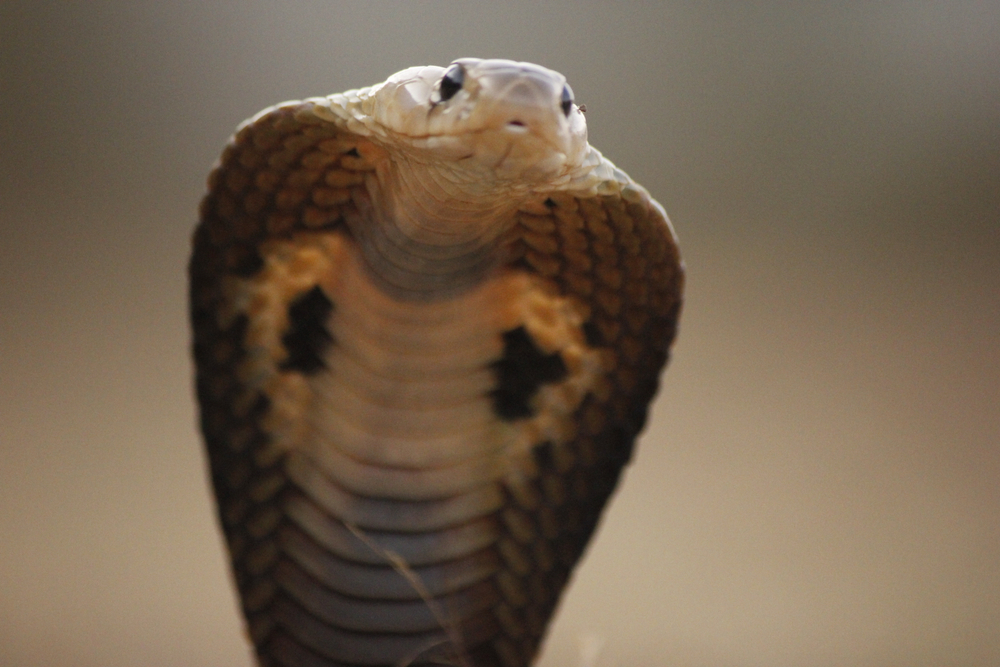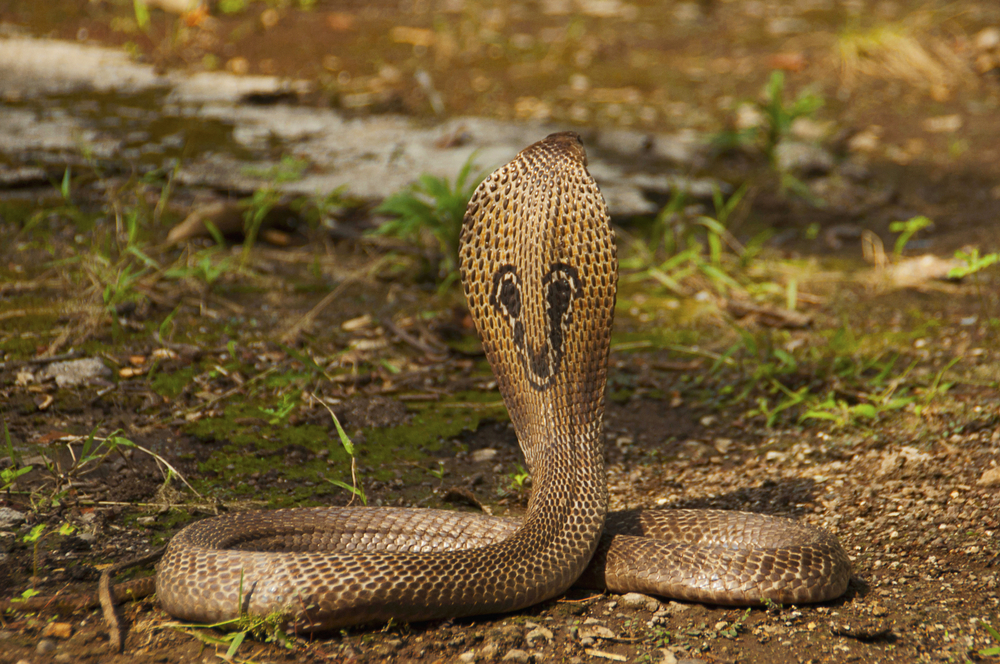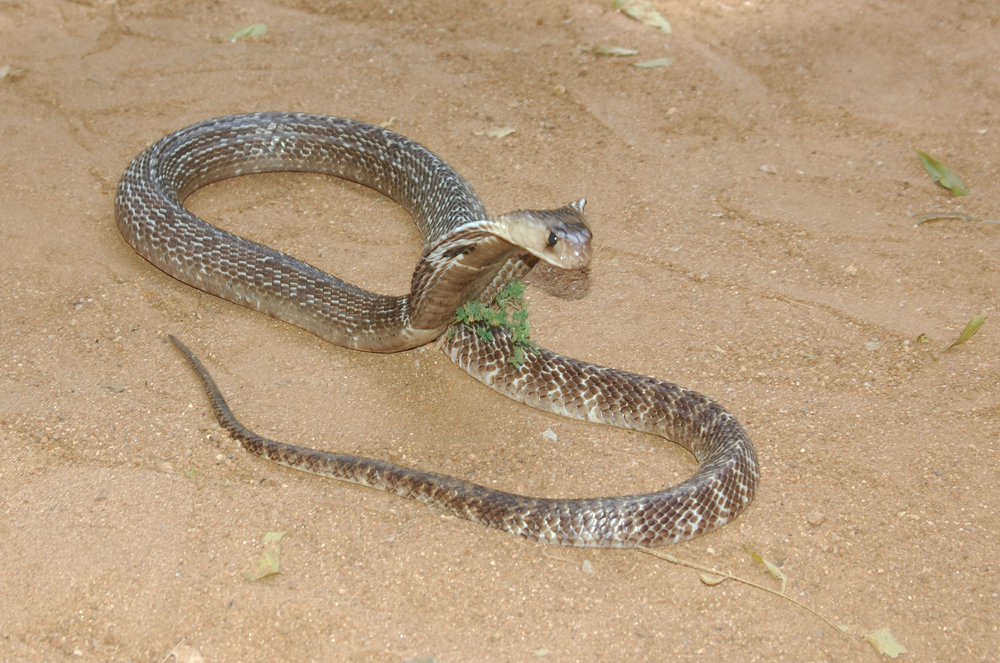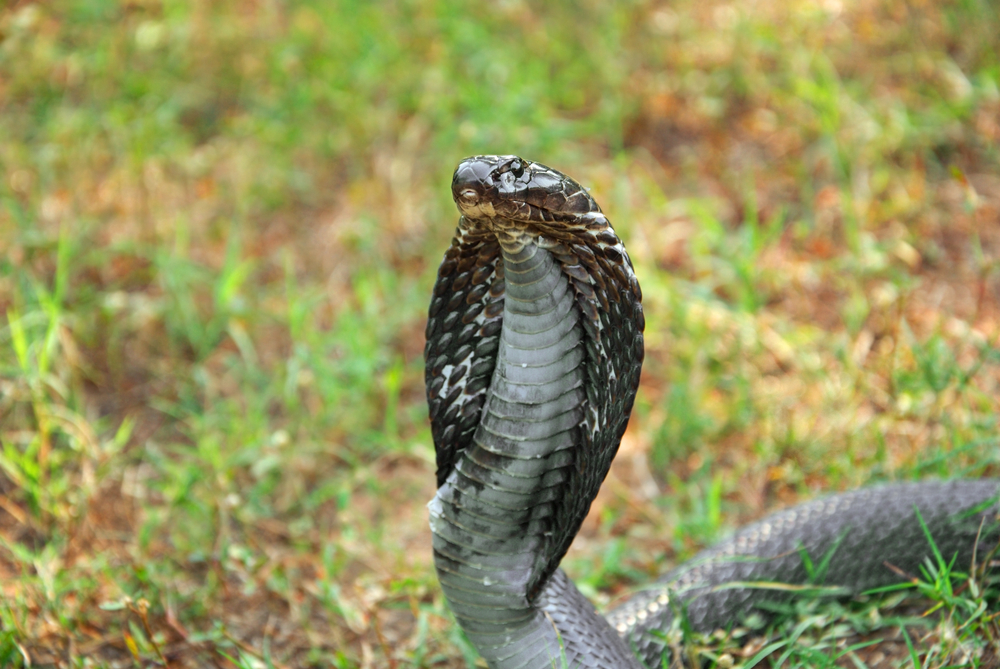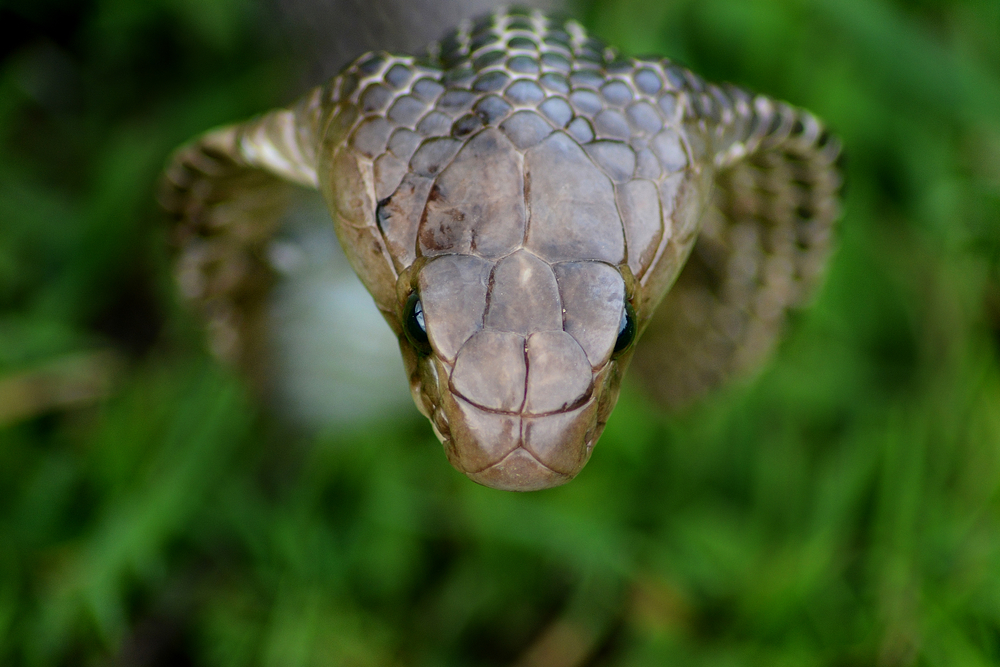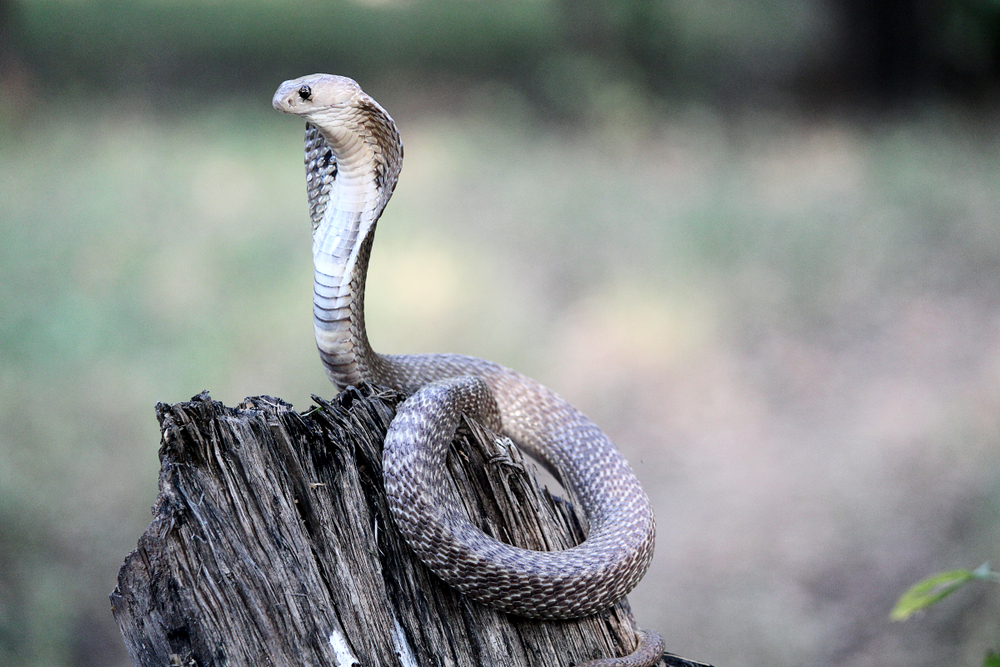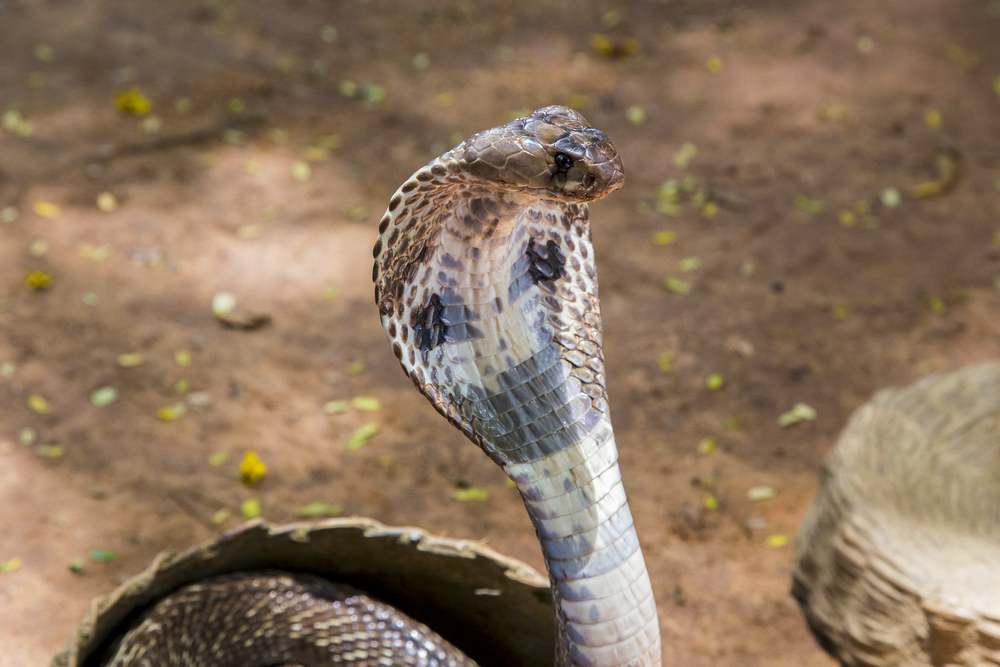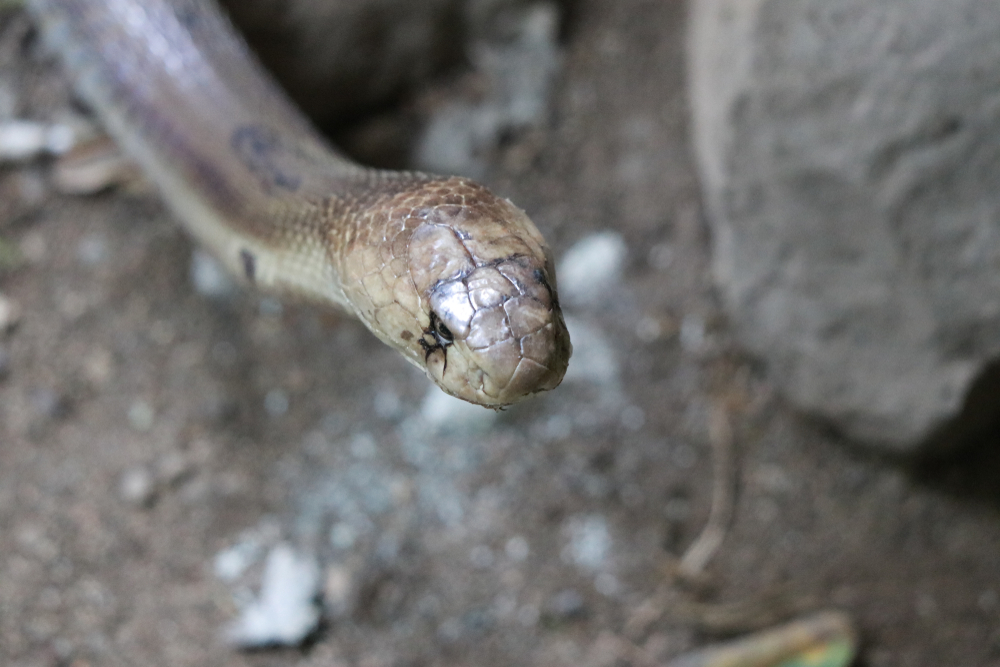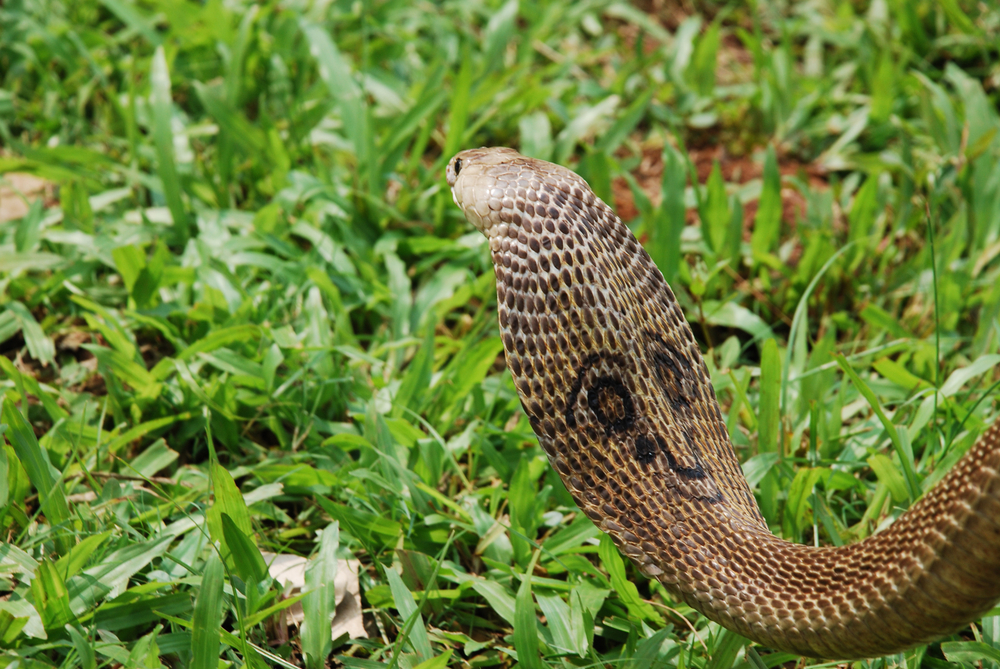The Indian Cobra (Naja naja) has several distinguishing features that set it apart from other cobra species:
1. Geographic Range:
- The Indian Cobra is primarily found in the Indian subcontinent (India, Pakistan, Bangladesh, Sri Lanka, and Nepal), while other cobra species inhabit various regions across Africa, the Middle East, and Southeast Asia.
2. Physical Appearance:
- Hood Markings: The Indian Cobra is known for the distinctive “spectacle” pattern on its hood, which resembles a pair of glasses. This marking is unique among cobras.
- Color Variation: It exhibits a range of color variations, from light tan to dark brown or even black, but the spectacle pattern is a consistent feature.
3. Venom Composition:
- While all cobras have venom that is primarily neurotoxic, affecting the nervous system, the composition of the Indian Cobra’s venom can differ from that of other species like the King Cobra (Ophiophagus hannah), the Egyptian Cobra (Naja haje), or the Cape Cobra (Naja nivea).
4. Behavior and Temperament:
- The Indian Cobra, while potentially aggressive when cornered or threatened, is generally more inclined to flee and avoid confrontation, a behavior that can vary among cobra species.
5. Habitat Preferences:
- Indian Cobras often thrive in a variety of habitats, including forests, open fields, agricultural lands, and populated areas. This adaptability can be more pronounced compared to some other cobra species that have more specific habitat preferences.
6. Cultural Significance:
- The Indian Cobra has a unique place in South Asian culture and mythology. It is revered in many Indian traditions and is a symbol of power and spiritual significance, a cultural association that is distinct from other cobra species.
These differences highlight the diversity within the cobra species, each adapted to their specific environments and possessing unique characteristics that distinguish them from one another.






























































